Ever wanted to take phone calls and jam out to ABBA while shooting? There’s an app for that: Sweden’s Hunter Electronic Hunter SMART ear pro. It’s active electronic hearing protection with built-in Bluetooth, now available in the U.S. of A . . .
Without batteries, Hunter’s cans are ~23 NRR muffs that work in the standard, “dumb” way. Turn them on, and the SMARTs do the smart thing. Noises are picked up by the unit’s external microphones and transmitted to your ears via speakers inside the ear cups.
As is the way of e-muffs, the Hunter’s speakers won’t replay any sound over ~80 dB. Anything over 80 dB can be heard fairly well despite the muff’s muffling; there’s no need for electronic enhancement above that threshold.
Cranking the volume up amplifies softer sounds, giving the wearer Superman hearing. Sound amplification is handy when doubling up on hearing protection — wearing plugs underneath the muffs, recommended when shooting at indoor ranges bereft of sound deadening materials (cough Red’s cough).
SMART audio arrives in full stereo. The separation’s precise enough to easily identify the source of a noise — whether it’s left, right, in front, behind or any combination thereof. The volume level’s adjustable on both sides; the wearer can tune left/right amplification to his or her liking.
A lot of the low-end e-muffs are mono. And most cans that enable moving in stereo don’t do it nearly as well as the Hunter SMARTs. Which makes the Hunter SMART ear pro ideal for hunters.
While the SMARTs provide stereo functionality at a high level, so do the $89 Hunter A2s, and myriad models from other brands. SMARTs justify their genre-topping $249 MSRP with Bluetooth-enabled communications and entertainment functionality.
Connect the headset — at this point, the SMART “muffs” graduate to a “headset” — to a mobile device and you can listen to music, your favorite podcast, or take ‘phone calls. Click the volume button on the headset to play/pause your tunes and/or answer/hang up on your better half.
When you’re ready to take a call, a boom microphone picks up your voice. In the photo above, it’s tucked into its home in the left cup…
Simply pull it out and get ready to impress your mom with shockingly, amazingly good audio no matter what you’re up to. Thanks to the other microphones on the left and right cups and the sound processing power inside of the SMARTs, the cans isolate the sound of your voice from just about anything.
For instance, I called my neighbor while thoroughly exercising his snowblower. I kid you not, with the snowblower cranking at full blast, he thought I was calling from inside the house in a quiet room after wrapping up. He said I sounded crisp and clear and that there was no background noise, and, confused as to why I was asking, was certainly surprised when I told him to look out the window to the sight of a 20-foot, gas-powered arc of snow. Truly impressive stuff.
If you’re more of an analog type of a hipster, Hunter has you covered. A 3.5 mm jack can be used to connect to a two-way radio, with the pause/play button on the left cup acting as the “transmit” button. Radio communications always receive priority over anything coming in via Bluetooth or ambient amplification. Additionally, should the headset’s batteries die, a separate speaker is powered by the radio itself and acts as a fail-safe.
Also seen in the photo above, there’s a micro-USB port for charging. The SMARTs come with standard AAA batteries, but you can use rechargeables. Even better, you don’t have to remove the batteries from the cup for charging. An indicator light shows charging status.
Although charge-while-installed is a handy feature, you can change the batteries in a snap. An external cover pops off without a fuss, without any worry about breaking the tabs. With Bluetooth off, you can expect about 180 hours of electronic hearing protection using standard batteries. Under constant Bluetooth streaming, the cans deliver about 50 hours of use.
The Hunter SMARTs are ergonomically sound. Both the muffs themselves and the removable head strap padding are comfortable. I find the tension level to be a bit high, but that’s often necessary for a proper ear muff seal. Plus I have a large head and large, stiff ears. That said, I’ve worn the SMARTs for as long as seven hours straight without issue.
Sound amplification is great and the “highly precise directional sound detection” is accurate as billed. The Hunter SMARTs boast an IP54 water resistant rating (i.e. protection from splashes from any direction). Also appreciated: they have a serious, professional look — somewhere between shooting muffs and helicopter headset.
There are some gripes, though:
The Hunter SMARTs turn on too easily. I’ve burned through a few sets of batteries due to the soft detent in the selector’s “off” position. Throw ’em in a range bag, suitcase, etc. clicked all the way off, and they always seem to come out turned on. Sometimes they come out days later, batteries dead.
I’d also like the option of forcing equal left-right amplification. It’s cool to be able to adjust them separately, but there’s no way to not adjust them separately. I find my OCD compelling me to have both sides on full volume just to ensure that they’re even.
There are no clicks between off and full-blast — it’s just a smooth rotation through that full travel. So there’s really no way to know that left and right are being amplified equally unless both are off, or both are on full.
I’d also like a separate Bluetooth volume adjustment on the headset. As the SMARTs are configured now, the volume dials adjust only the ambient sound amplification. Adjusting the volume of your music or call has to be done on your mobile device. This negates some of the benefit of wireless functionality, including Hunter’s own suggestion that “…the phone can be in the backpack…”
An approximate noise reduction rating of 23 NRR (approximate because it’s certified to the European EN 352-4 rating but doesn’t have an officially-certified NRR rating) is a bit low.
While NRR ratings are extremely complicated, the fact remains that the SMARTs provide less gunshot noise suppression for me than some other muffs and plugs. I’ve never found them insufficient when shooting outdoors, where they seem to perform on-par with other options, but I’m compelled to double-up at an indoor range.
Overall, I’m left highly impressed with the Hunter SMART active electronic hearing protection. While I didn’t think I would care at all, I must admit that listening to music or talk radio while on the range or even just having the ability to take calls in a noisy environment has been awesome.
With a few tweaks the SMARTs could be even better, but with the high quality of the active electronic hearing enhancement and the added functionality of Bluetooth and radio communications they’re well worth the cost of entry.
Specifications: Hunter SMART Bluetooth Headset
MSRP: $249
Bluetooth: Bluetooth 4.0
Environment: IP54 water resistant
Operation time: (alkaline batteries) >180 hours ambient sound >50h Bluetooth streaming
Power supply: 3 pcs AAA batteries (alkaline/rechargeable Ni-MH)
Charging outlet: USB Micro-B, 5V/500mA (same as Android mobile phone)
Audio outlet: 3.5mm (mono)
Hearing Protection Classification: EN 352-4 (approximately 23 dB NRR)
Weight: 370 gram (13 ounces) including batteries
Ratings (out of five stars):
Audio Quality * * * * *
Whether it’s the quality of the active audio amplification’s stereo precision or of the microphone’s superb noise-cancelling capabilities, the SMARTs get five stars. The audio quality of music reproduction won’t give Dr. Dre a run for his Beats money, but it’s still more than good enough to rock out on the range or while mowing the lawn. The sound isn’t tinny or hollow and the frequency response seems decent.
Noise Reduction * *
Three stars is average, and while it’s slightly subjective — although 23 NRR is also a fairly low rating — the SMARTs provide less hearing protection than the average muff. Thankfully, they’re great at amplifying ambient sound so hearing conversations with ear plugs in is even easier with the SMARTs than without, as long as ambient volume levels are under 80 dB.
Feature Set * * * * *
Excellent electronics, Bluetooth functionality with play/pause/answer/hang up button, 2-way radio functionality, and a retracting microphone boom. This is one advanced set of ear pro.
Comfort * * *
Average. I like the padded strap and the fact that the padding is easily removed for cleaning. As you’d expect, it isn’t ideal with a ball cap (the kind with the button on top). I find the squeeze tension to be a bit high, but then I do have a large head and this isn’t a unique issue. The padding material on the ear muffs would be more comfortable were it softer and less plastic-feeling.
Overall * * * *
Solid functionality and awesome electronics. Final star withheld for the muff’s tendency to accidentally switch “on” (draining the batteries) and the lack of on-board volume adjustment for Bluetooth, and a lower-than-I’d-like NRR.

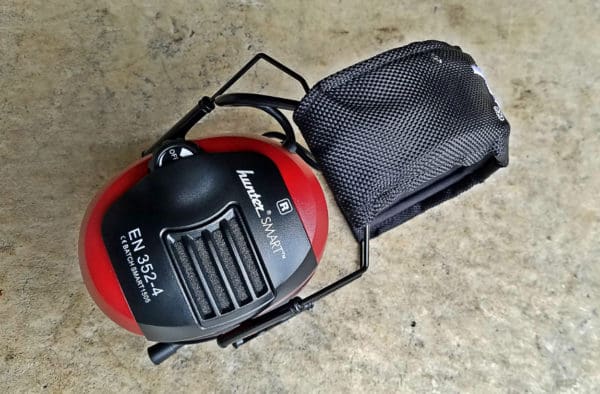
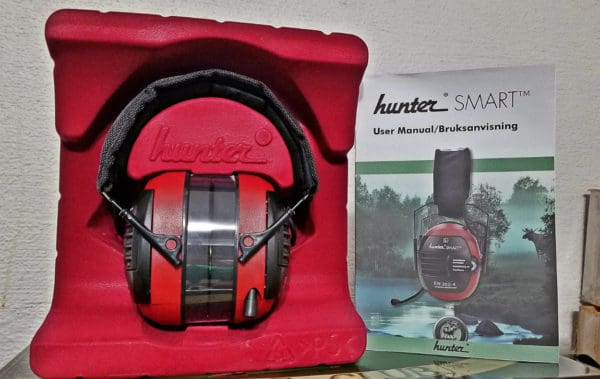
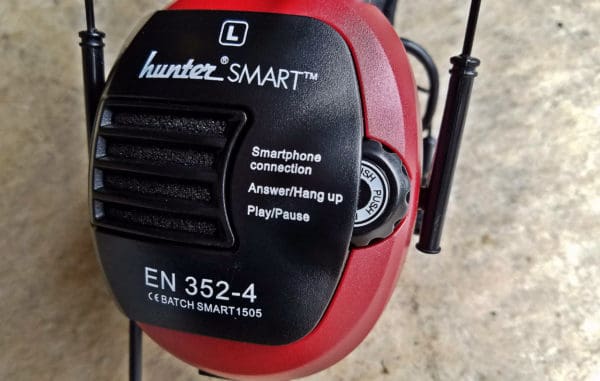
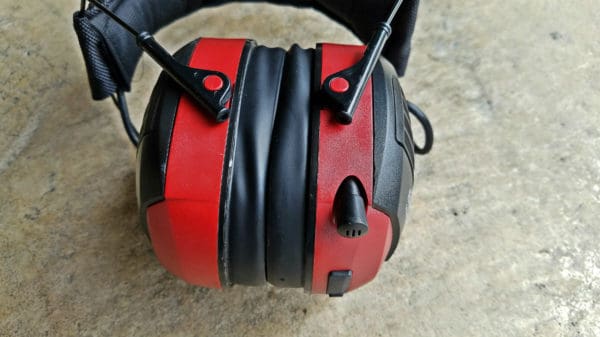
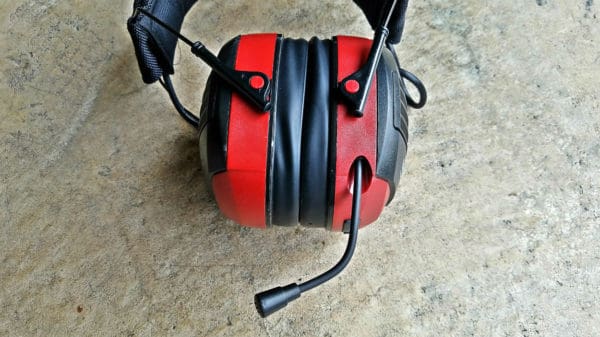

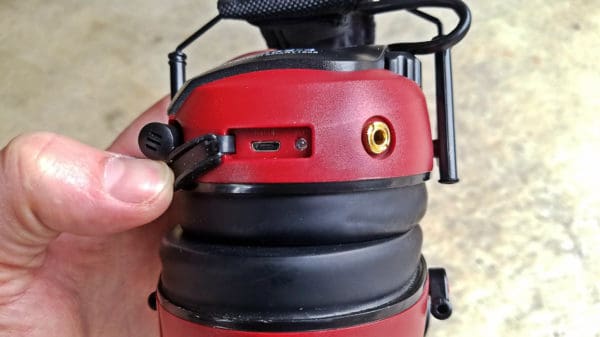
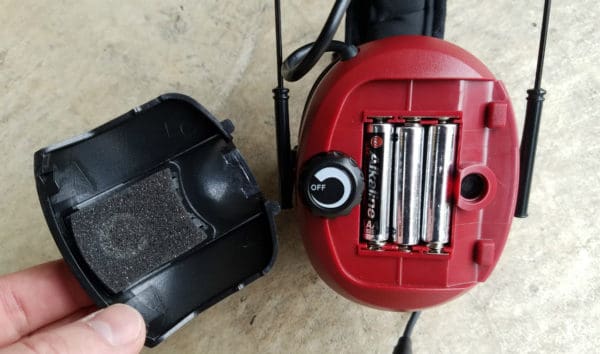
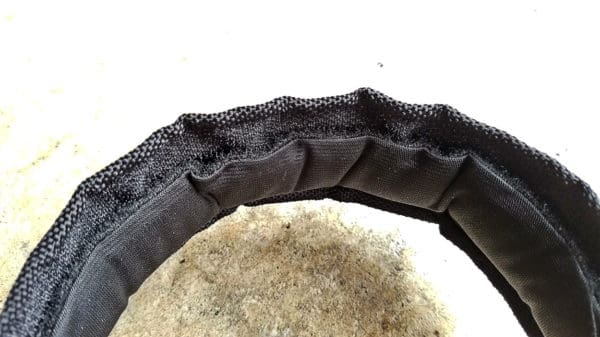



That actually looks rather cool. Is there a version that mounts to head gear? I’m still looking for a nice PTT radio compatible headset that will mount to my helmet rails. (My head is a bit large, go wearing the ear-pro band under the helmet 100% does not work for me.)
If it’s a standard headband there are conversion kits for most OTE helmets. ITStactical reviewed a bunch of PTT radio/helmet options in one of their recent gear tastings. I’m on my phone right now though so I can’t give you a direct link because that site isn’t “mobile friendly”.
I have slain the electronic demons. He talks about helmet mounting options.
http://www.itstactical.com/centcom/gear-tasting/gear-tasting-58-chemlights-radio-ptts-dungeons-dragons/
One of the hard hats I have has slots built-in to them so that the hard-hat version of their muffs snap into them. The helmet itself becomes the head band and they are rock solid, once you tighten the knob in the back.
Could you fabricate and retrofit something like that for it?
You had me at ABBA.
Alternatively, you can listen to drunk Hillary Clinton drone through narration of her endless ‘books’ no one has ever read.
Although, that might prompt you to shoot yourself, so “bad idea”.
Looks like a really nice set of ‘muffs. $250 is a bit steep, but quality kit is always appreciated and usually worth the investment. I hope I remember these when my Howard Leights eventually die.
I have no idea if these are the same quality level, but sometimes you pay for quality. For example my MSA Sordins were about $250 (now they are closer to $300 I believe) when I bought them 8 years ago. They are still trucking along, and I don’t see them dying anytime soon. So I never think of replacing them like you are with your cheaper muffs.
And even if they do break, they have actual support, so I can get them fixed for a fraction of the cost of a new set after the 5 year warranty expires.
“Simply pull it out and get ready to impress your mom…”
context
Coffee.
Right out my nose.
I meant that I pulled it out and impressed your mom. Your way is just gross.
I did it all, but it is disappointing, especially at this price range, that it does not do the most important thing it’s supposed to do very well.
…and that most important thing… is?
I’d think he was referring to the 23dB noise reduction level they provide.
Yup
But is that 23db in the range of gunshot? Average NRRs can be deceptive, some of the muffs with extremely high NRRs are only that much better at lower frequencies (which take more material to block), but at higher frequencies that gunshot noise is at the difference is often marginal within a couple of decibels.
Yes, frequency range is super important as is impulse vs. continuous noise reduction. Oddly enough, some types of hearing protection can allow continuous audio through with little attenuation (which is great for hearing people speak) while still being extremely effective at dampening impulse audio (attenuating a gunshot). Some muffle both a whole lot. Some ear muffs designed for industrial use like working in a loud factory or around machinery will have high continuous attenuation but low impulse attenuation, and these would be a terrible choice for firearms stuff even if technically they’re rated for a high NRR. If that isn’t a high impulse NRR, it’s meaningless for shooting sports.
For all these reasons, I hedged on saying that “23 NRR” is too low. Again, it’s super complicated and 23 NRR in one ear pro that’s really solid on impulse noise in typical gunshot frequencies may be WAY f’ing better than 23 NRR in a different ear pro.
What I’ve found with these SMARTs is that, outdoors, they’re fine. I feel as protected as I need to be. I wore them from 8:00 am to 3:00 pm at SHOT Show range day, surrounded by hundreds of firearms being fired basically non-stop, and was totally happy. I wore them a week-ish ago shooting with RF and JWT outside and we fired .44 mag out of three handguns (including a snubbie), .458 Socom, etc. A-okay. BUT…take them indoors and I find that they don’t give me the protection of most other ear pro I have experience with. It’s possible the noise suppression is short on duration, and they’re attenuating the impulse of the gunshot fine but the echo and reverb off the walls and such isn’t well-attenuated because it’s falling more into the continuous category or is in a different frequency range or something scientifically way above my head. But suppression duration is a strong consideration in ear pro as well.
These are billed very heavily as a “hunting” headset. Meaning, I suppose, for use outdoors. In that setting they’re great. Indoors I double up. But, to be fair, I’ve always felt like doubling up indoors (or only using like ~32 NRR plugs) is the best choice and very very rarely feel like the volume level is comfortable with only muffs on indoors.
These look just about ideal. I want stereo, and it has it. It does both alkaline and rechargeable. Good!
On the rechargeables – Is it NiCad or NiMH?
An observation – A few years back, I bought a small electronic do-dad that came with the batteries installed, but with a small plastic tab you pulled out to activate the batteries. Something like that would likely work on this thing. Yeah, it will be a small pain when putting them away after use, but it will eliminate the dead battery problem. When putting them on in the dark, just feel for and extract the tab.
And has TTAG ever done an ANR headset shoot-out? One of the things I’m most interested in is a comparison on super-hearing performance when investigating noises at night, and this one looks like it might be a contender in that regard…
“Ever wanted to . . . jam out to ABBA while you’re shooting?”
Singing along to “Dancing Queen” at the range is a great way to get shot.
DID SOMEONE SAY DANCING QUEEN?!
https://youtu.be/xFrGuyw1V8s
It is now stuck in your head. You’re welcome.
Sorry, still distracted elsewhere…
https://www.youtube.com/watch?v=NdglHTSt7fg
No contest! 🙂
Ah, Dancing Queen. Anachronistic lyrics (“You can dance, you can jive” and “Diggin’ the Dancing Queen”), the incredibly inept Swedish version of the Frug (or was it the Hully Gully?), shaggy ‘dos and double knits . . . . the 70’s come to life before our very eyes!
How did we live through it the first time?
Hunter Electronic is Swedish…so…had to be ABBA.
It could have been Ace of Base.
Or Roxette.
Hm.
I should stop now.
I wonder if they are related to Sordin? As they are also Sweedish.
These don’t look too bad. Although I sort of like not being able to hear my phone at the range, it’s like a mini vacation.
“Doesn’t anybody [bleeping] knock any more?!”
– Brad, interrupted
Now the CIA can hack your earmuffs and tape all the conversation of you and your buddies talking smack bout do government
Am I correct in assuming that if it’s SMART, the CIA can hack this too?
The author refereed to these as “active electronic hearing protection” To me “active” implies noise canceling. Although these are priced in noise canceling headset territory, they aren’t noise canceling.
Is there a better way to define the 3 categories of hearing protection? Dumb muffling, dumb muffling with low volume amplification and active noise canceling?
Can active noise canceling technology be fast enough to truly protect against high dB impulse noise? An important question since active noise canceling technology was originally developed to counter continuous high volume background noise.
“Active hearing protection” should not imply “active noise cancelling.” Totally different mechanisms — insulation vs acoustic cancellation.
“Active” in this market means microphones on the outside relay sounds to speakers on the inside, but this shuts off if volume levels exceed 80 dB. It isn’t really a question of reacting quickly enough, as the normal mode is “dumb” muff. If a sound is under 80 dB, the speakers inside the muffs will relay it. If the sound is over 80 dB, the speakers won’t relay it. It isn’t like an auto-dimming welding mask where it goes dark after it senses a bright light, because in this case the normal mode is dark. Does this make sense? They aren’t always letting sound through them and then suddenly blocking sound. They always block sound. Speakers inside are what “let the sound through”…but really you aren’t hearing the sound itself, you’re hearing the speakers relaying the sound to the inside. The effective volume level you hear is the noise level outside, minus 23 dB reduction, plus however loud the internal speakers are set. That’s why I mentioned that, without batteries, these are standard ear muffs with a 23 NRR reduction. That’s the opposite of how active noise cancelling (or auto-dimming lenses) works.
BTW for active noise cancelling to work for cancelling out the sound of a gunshot, it would not only have to be insanely fast, but extremely loud. The speakers inside the muffs would have to be capable of playing an acoustically opposite sound, which I’m pretty sure means they’d have to be able to output like 165 dB to actually cancel out the sound of a rifle shot. That just isn’t going to happen with any speaker you could wear on your head.
I get that reaction time isn’t really a concern with the “active hearing protection” due to the at rest mode being max NRR. I still don’t like the “active hearing protection” label. In my opinion, these don’t “actively” protecting hearing.
As for the amount of power that active noise cancelling would require, you are overestimating. You still have the basic muff to knock out the first 20 dB. Then the noise canceling speakers just need to bring the remainder down to under 100dB or whatever is desired.
As you pointed out, it would still have to be incredibly fast acting.
The electronics are active, not the protection 😛
I love the concept. I have been dying for a pair of headphones that can play music and connect to my phone. The only thing is the price point must be below $199 for me.
i’ve had a pair for just over a year and now one of the plastic bits that connects the muff to the head band is broken and I’ve not been able to contact the vendor for support. the phone number on the http://www.huntercom.us web site is disconnected and they haven’t answered a support inquiry via their ‘contact us’ web page.
The good folks at SRS Tactical said they think Hunter is out of business. But they had some spare parts and sent me the part i need. Thanks SRS Tactical!
Comments are closed.